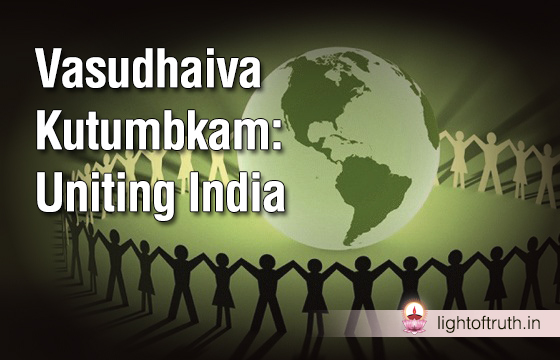Azadi ka Amrit Mahotsav Kolkata event honours four Clergymen
Pope Francis asks businesses to support working women: They’re ‘afraid to get pregnant’
Study: Christianity may lose majority, plurality status in U.S. by 2070
Indian politician declines Magsaysay Award under party pressure
Like John Paul II, Pope Francis heads to Kazakhstan during time of war

Mumbai, Jan 10, 2022: ‘Unity in Diversity’ has been a major phrase which I picked up during my school days. Enjoying Ramlila for ten days before Vijayadhami ran parallel to seeing the Tazia processions, to the Jains processions with slogans Vande Viram (Hail Lord Mahavira), the celebrations of Dalits on the day when Babasaheb Ambedkar embraced Buddhism, and the celebration of Christmas with college friends.
The experience of diversity was deeply rooted in the celebrations of different festivals; it was experiential and not just in the realm of theory.
Indian society’s diversity dates as back in time as one can imagine. Christianity is older in India than in many Christian majority countries. Right in seventh century Islam became a part of this land. Shaka, Kushans, Huns, Greeks added their own flavor to our culture. How did the diversity become deeply rooted in our psyche?
While there was ethnic strife, Shia-Sunni, Shaiva-Vaishnav conflicts, overall the social atmosphere was rooted in peace and harmony between diverse religious streams. Edicts of Ashoka ask for mutual respect between diverse religious streams (that time Buddhism, Brahmanism, Jainism, and Ajivikas in particular). Much later the likes of Akbar promoted Deen-E-Ilahi and Sulhe Kul, While Dara Shukoh went on the describe India as a vast ocean made of two seas (Hinduism and Islam) in his book Majma Ul Baharayn.
Running parallel to the same was the great saint tradition. The Bhakti Saints like Kabir, Ramdeo Baba peer, Tukaram, Namdeo and Narsi Mehta drew their followers from both Hindus and Muslims. Sufi saints like Nizamuddin Auliya, Khwaja Garib Nawaj, Haji Malang’s became part of Indian ethos and these saints embraced all the people irrespective of their religion and caste. They adopted to local culture in unrestrained way.
It was during colonial period that divisive tendencies in the name of religion reared their head due to British policy of ‘divide and rule’. These tendencies were initiated by the elite of the society. But these tendencies were overshadowed by the integrative-all inclusive freedom movement. It is here that the magical interpretation of Hinduism by Gandhi succeeded in mobilizing people of all religions in to the single thread of Indian nationalism. Gandhi’s charisma and humanism left a deep impression on people of all religions. His prayer meetings had shlokas from Gita, Ayats from Koran and extracts from Bible.
It is during this period that we saw Maulana Abul Kalam Azad, Shaukatullah Ansari, Khan Abdul Gaffar Khan, Allah Baksh and their likes rubbing shoulders with Nehru, Patel and other leaders of freedom movement and due to diversity added richness and strength to the composite Indian nationalism.
Our cultural values heavily drew from each other in a very subtle and deep ways in all aspects of our life, food habits, literature, art, music, architecture and what have you. Currently the things seem to be moving in the reverse direction to the detriment of peace and harmony from last few decades. On the positive side we are witnessing the coming up of integrative efforts going beyond religions. We had eminent social workers like Swami Agnivesh and Asghar Ali Engineer who jointly and separately promoted interfaith dialogue to remove misunderstandings between different faiths. This movement of interfaith dialogue went a long way in reducing the misunderstandings at theological and social level.
Both these luminaries contributed to Hindus and Muslims coming together. From among Christians the likes of Stan Swami, Valson Thampu, John Dayal and Cedric Prakash rose tall to emphasize the humane aspects their religions. There initiative contributed greatly to the process of maintaining amity between diverse societies. Their contributions to the harmony process are profound. In their own ways they are parts of movements which are leaving the imprint of harmony on the society as a whole.
In many cities there are communal harmony groups, charity groups helping all communities which are not much in news. As such since these groups are working in silence, they remain unnoticed while the violence of divisive groups always hogs the limelight. These groups some times are unconnected but are part of the trend and offer big hope.
At another level the Farmers movement, the greatest mass movement post independence has promoted Communal amity in a profound way. Similarly Shaheen Bagh movement played the role of strengthening intercommunity amity.
The deeper problem is that with the global rise of the practitioners of ‘Clash of civilization’ thesis. As the divisive tendencies are becoming stronger, India is no exception. The UN sponsored high level committee, when Kofi Annan was the Secretary General, has put forward the theory of ‘Alliance of Civilizations’. This is the guiding principle of many new emerging groups who look forward to revive the syncretic nature of our culture and society. In the current scenario these rays of hope are less known but very relevant for a peaceful future.
Ram Puniyani, Matters India